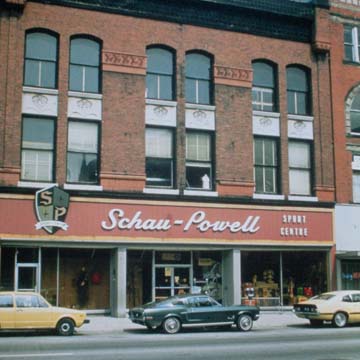The Haymarket contains a splendid collection of commercial buildings in a rich array of Romanesque Revival, Beaux-Arts classical, and Chicago commercial styles that echo the tendencies of commercial districts elsewhere in the Midwest. Uniform in height, these buildings constituted the heart of this late-nineteenth-century Kalamazoo business district. In the period between the Civil War and World War II, this was commonly known as the German and German Jewish district, and the buildings bear names such as Ihling, Rosenbaum, and Desenberg. The name Haymarket comes from its early use as a wagon staging area and haymarket.
At the northeast terminus of The Haymarket, at 402 E. Michigan Avenue, the Italianate former Grand Rapids and Indiana Railway Depot (1874) was transformed in 2002–2005 by Cambridge Seven Associates into spectacular offices and meeting space, now named the Arcus Depot. The Arcus Foundation, a civil and animal rights group, occupies the primary building and nonprofit foundations occupy the former warehouse. A canopied steel and glass lobby and corridor overlook the winter garden and link the historic station and warehouse.







